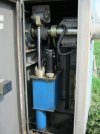moggie
Member
I believe that the reason was to reduce the chance of road users misusing level crossings which they believed had failed because the barriers had been down for "longer than normal" without a train passing.
A predictor system detects the speed of approaching trains so that the time interval between barriers being lowered and a train arriving is similar for all trains, irrespective of their speed.
As to organisation I'm unsure - probably Network Rail or its predecessors?
Yes indeed. My question was in part rhetorical. Predictor technology is as you say is to mitigate against misuse of the crossing by impatient road users. I'm pretty sure the other reason is to also to reduce road closure times where mixed rail traffic might otherwise result in longer strike in times for slower moving traffic , which anecdotally contributes to road user impatience. The agitating organisation pushing this technology on the rail industry - the ORR aided and abetted by the local MP's. The net result for the railway is the addition of complexity. Then they wonder why complexity in one system married with complexity at the wheel / rail interface and pressure to implement new systems pdq leads to unforeseen incidents.
I firmly believe that while RAIB can pinpoint the causal points of this incident, they ignore the underpinning culture of complexity and it's potential impact and the ability of the collective industry to consistently and effectively manage that complexity in a highly pressurised 'need it tomorrow' environment. Clearly that collective ability failed on this occassion.

